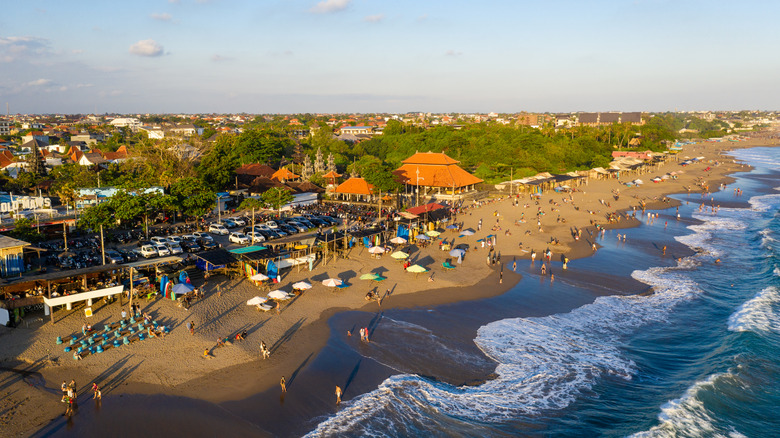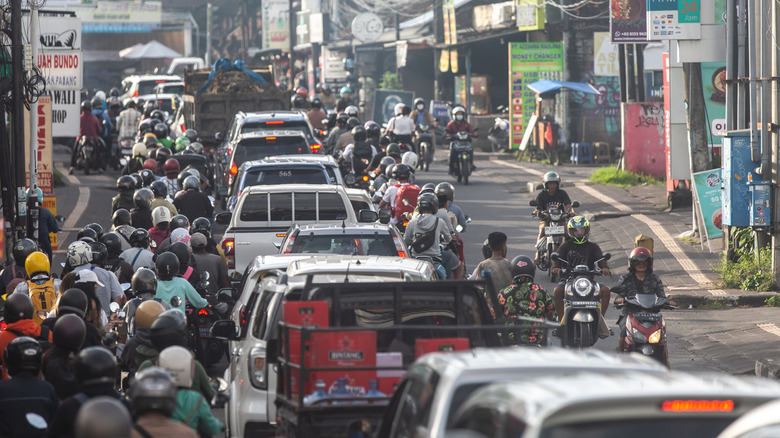The Highly Popular Tropical Vacation Island Getting A $20 Billion Underground Train For Easy Transit
When Bali came onto the tourist radar in 1970, it welcomed fewer than 35,000 visitors a year, according to data obtained by Bali Rental Villas. Back then, the tropical Indonesian island was home to 2 million people. Fast forward 55 years, and things look very different. Today, Bali has a population of 4.4 million and welcomes as many as 541,000 monthly foreign visitors. That adds up to 5.27 million tourists each year. Given the dramatic rise in tourism, it's no surprise that Bali has become notorious for its severe traffic and congestion. The solution to this problem is a project that has been in the pipeline for years: adding a train network to Bali's near-nonexistent public transport network.
Managed by the National Planning Agency, otherwise known as Bappenas, construction for the $20 billion train project is underway, and it is set to link the international airport with major tourist hubs. That will go a long way to improving traffic flow — most of it is concentrated around I Gusti Ngurah Rai International Airport in Depnasar — because unfortunately, Bali is currently one of the most beautiful destinations ruined by overtourism. The traffic is so bad that one smart travel hack for a Bali vacation is to steer clear of renting a car, especially given the narrow streets and confusing traffic laws.
The project's first phase will connect Kuta, Seminyak, Berawa, and Cemagi, allowing passengers to travel safely and quickly through the most congested part of the island. Phase two is expected to link the airport with Ubud, Jimbaran, and Nusa Dua. An additional two stages of the project are yet to be approved.
The Bali Urban Subway is the solution to Bali's traffic problems
Famous for its ecotourism sector, Bali is home to some of the best beach resorts in the world. Unfortunately, the chaotic journey between the airport and an idyllic hotel is often one of the most stressful parts of a trip. Traveling around 15 miles from DPS to Canggu can take 45 minutes on a good day, to an hour and 45 minutes during rush hour.
Phase one of the project is set to link the airport with the island's most densely populated areas along an underground track. The first 3 miles of track, between the airport and Kuta, is expected to cost 5 trillion IDR (around $297 million). The entire project will cost $20 billion, which is convenient, considering the island is expected to pull in a whopping $22.1 billion from tourism in 2025 alone according to The Bali Sun. Tourism currently comprises 4.1% of Indonesia's GDP.
Several challenges presented themselves in the initial planning phase. Media outlet detikFinance reported that some of the regulations for the transit route stipulate that new developments cannot displace religious temples and that buildings should not be taller than coconut trees. The most reasonable option was to build an underground railway. However, the publication noted that building underground is expensive — about three times as expensive as a traditional above-ground railroad. An added risk would be disturbing the already-overworked groundwater supply. At the time of writing, the project is expected to be completed by the end of 2031.

